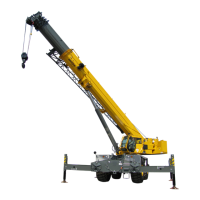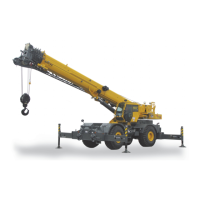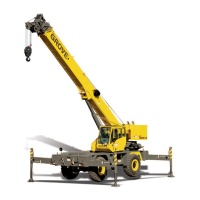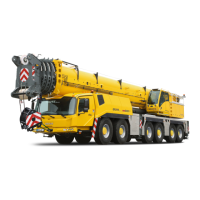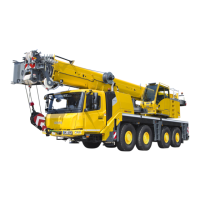Grove Published 3-1-2018, Control # 559-03 3-37
RT9130E-2 OPERATOR MANUAL OPERATING CONTROLS AND PROCEDURES
Exercise caution whenever driving the crane with the boom
elevated. Travel with the boom elevated is permitted as long
as the following steps are followed:
• Limit travel to firm, level surfaces.
• Inspect the route of travel prior to moving the crane. Pay
particular attention to any changing conditions in the
terrain being traversed. Also, avoid any overhead
obstructions.
• Travel must be performed in a controlled fashion.
• Do not exceed a speed of 24 km/h (15 mph) with the
standard counterweight or 16 km/h (10 mph) with the
heavy counterweight.
• Inflate tires to the recommended pressure for travel
operations.
• When using the towing attachments, the boom must
remain horizontal.
• Fully retract all boom sections.
• Refer to Traveling with Jib and/or Inserts Erected, page
3-37 if the jib is in the erected position.
• Position the boom over the front of the crane.
• Engage the swing brake and turntable lock pin.
• The hookblock may be reeved over the main boom
nose. The headache ball may be reeved over the main
boom nose or auxiliary boom nose. The block and ball
may be suspended below the boom nose. It is also
acceptable to secure the block or the ball to the tie down
point on the carrier to prevent swinging, if necessary.
• Limit boom angle to a maximum of 30° with the standard
counterweight or horizontal only with the heavy
counterweight.
• Do not support any load from the boom (see Pick and
Carry Load chart for limitations for this application).
• Remove all cribbing or other non-standard accessories
from the crane.
• Avoid holes, rocks, extremely soft surfaces and any
other obstacles that might subject the crane to undue
stresses and possible overturn.
• Ensure adequate clearance to any overhead
obstructions that the crane may be required to travel
beneath.
Traveling with Jib and/or Inserts Erected
11 m (36 ft)/18 m (59 ft) Jib
Follow the steps below when traveling with the extension
erected.
• Position the 11 m (36 ft) or 18 m (59 ft) jib at minimum
offset. If traveling with just the 11 m (36 ft) jib, stow the
stinger section on the boom base section, not on the jib
base section.
• Travel only on a firm, level surface.
• Fully retract the main boom
3. Fold the deflection sheave in for transportation.
• Limit main boom angle to a minimum of 0° and a
maximum of 30°.
• Do not exceed a speed of 4 km/h (2.5 mph).
• Ensure main counterweight is installed.
• Position the boom over the front of the crane.
• Engage the swing brake and turntable lock pin.
• Remove hookblock from main boom nose.
• Headache ball may be reeved over jib, hanging 0.9 m
(3 ft) below sheave.
18 m (59 ft) Jib Plus 8 m (26 ft) / 16 m (52 ft) Insert
Follow the steps below when traveling with the extension
and insert erected.
• Position the 18 m (59 ft) jib plus insert(s) at minimum
offset. If traveling with just the 11 m (36 ft) jib and
insert(s), stow the stinger section on the boom base
section, not on the jib base section.
• Travel only on a firm, level surface.
• Fully retract the main boom
4. Fold the deflection sheave in for transportation.
• Limit main boom angle to a minimum of 0° and a
maximum of 20°.
CAUTION
Traveling is not permitted with a jib reeved with two parts
of line.
Damage to the jib may occur.
CAUTION
Make sure the deflection sheave is folded in the down
position prior to transportation or damage to the crane
may result.
CAUTION
Make sure the deflection sheave is folded in the down
position prior to transportation or damage to the crane
may result.
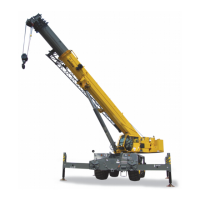
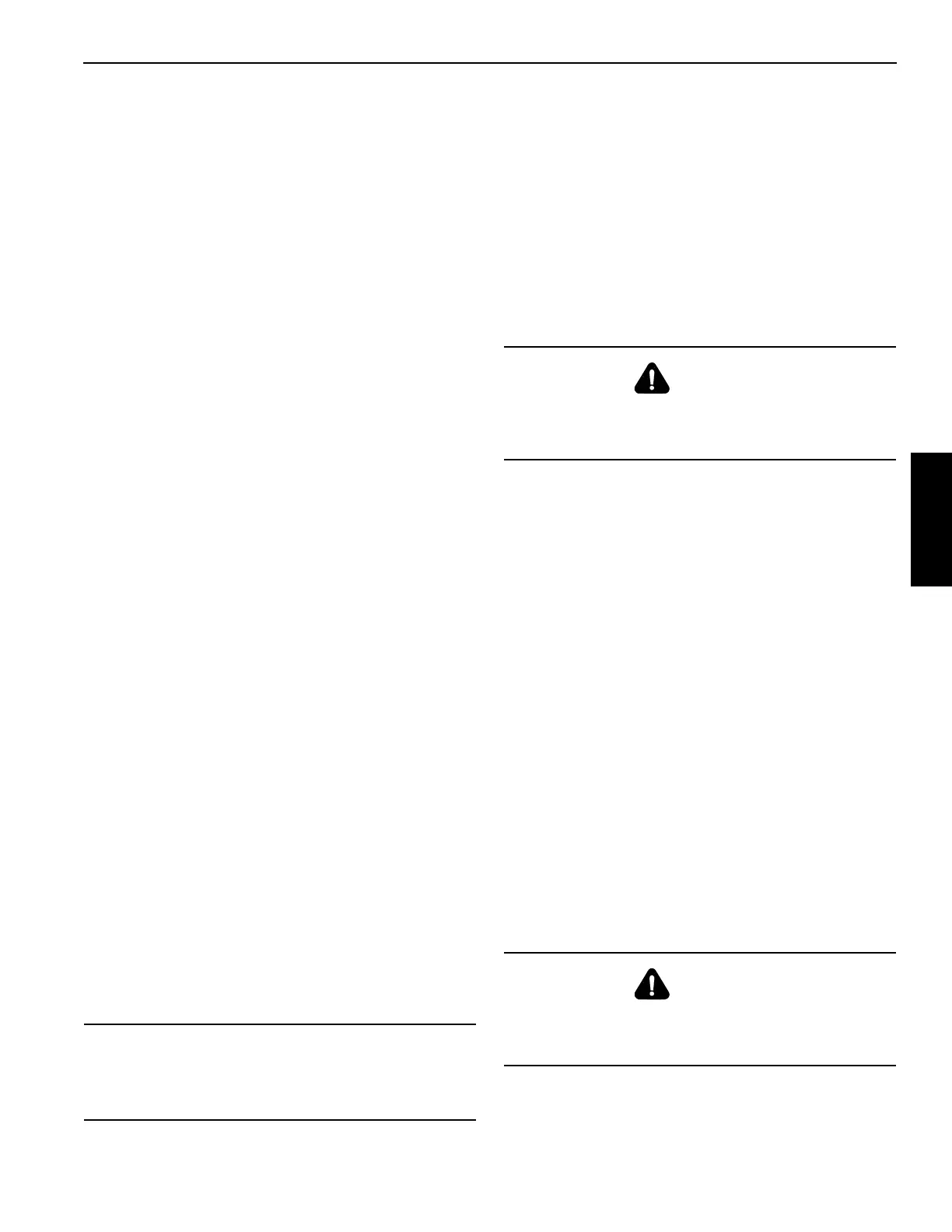